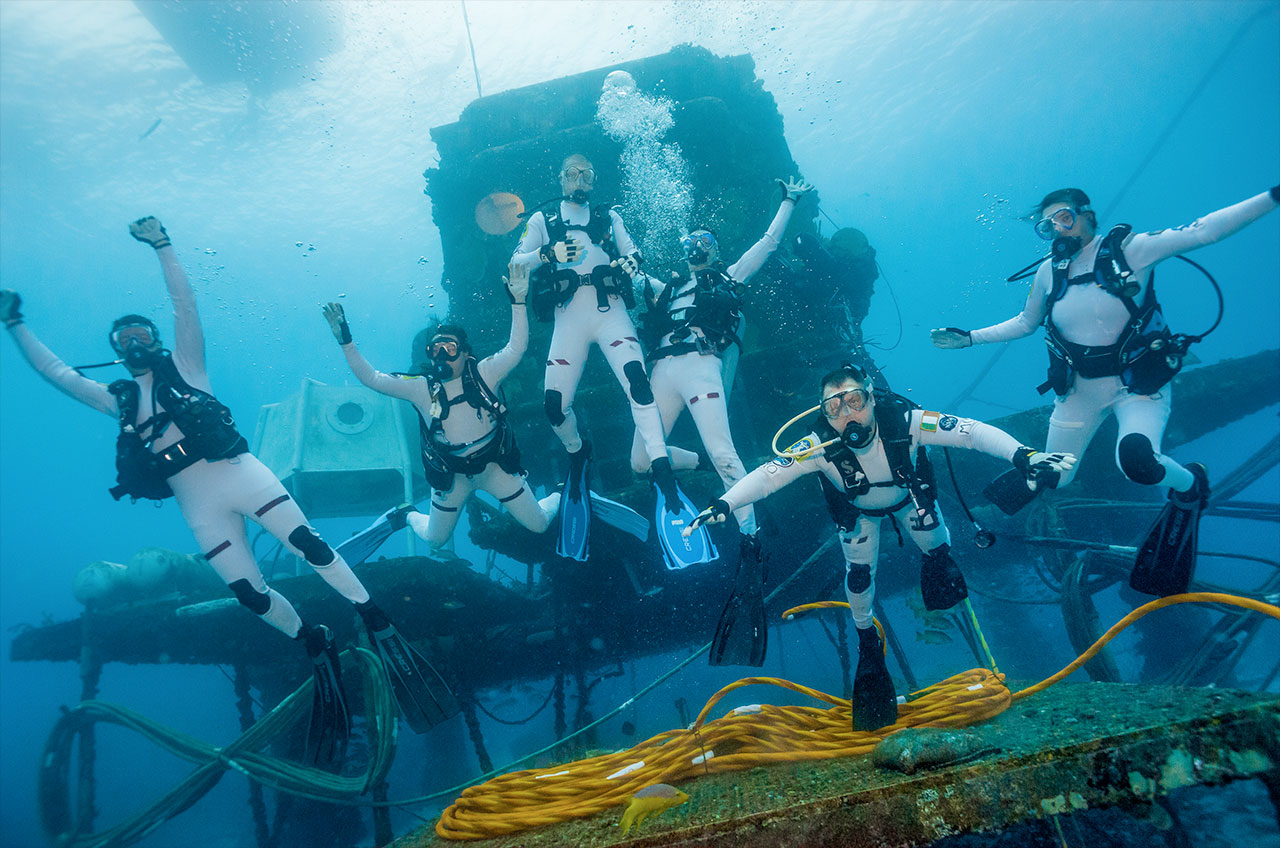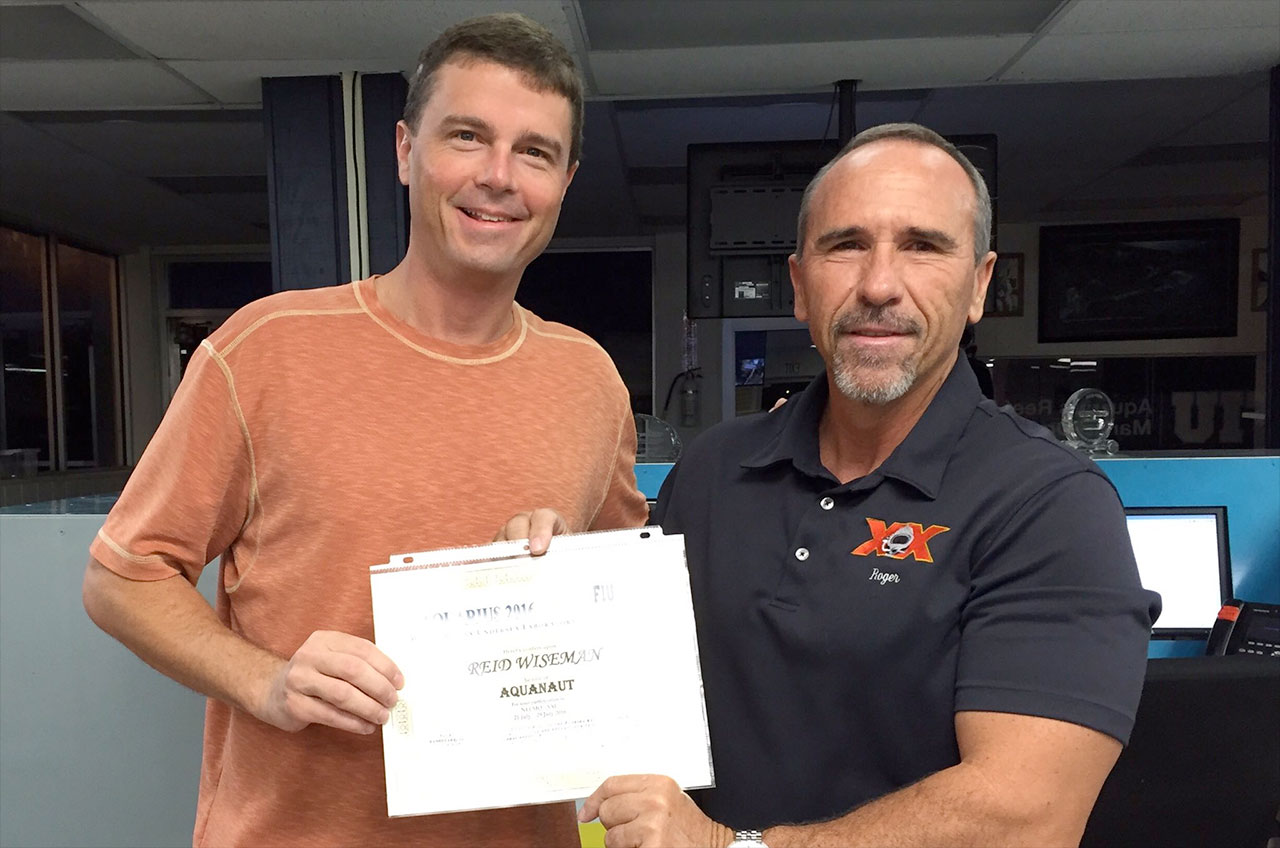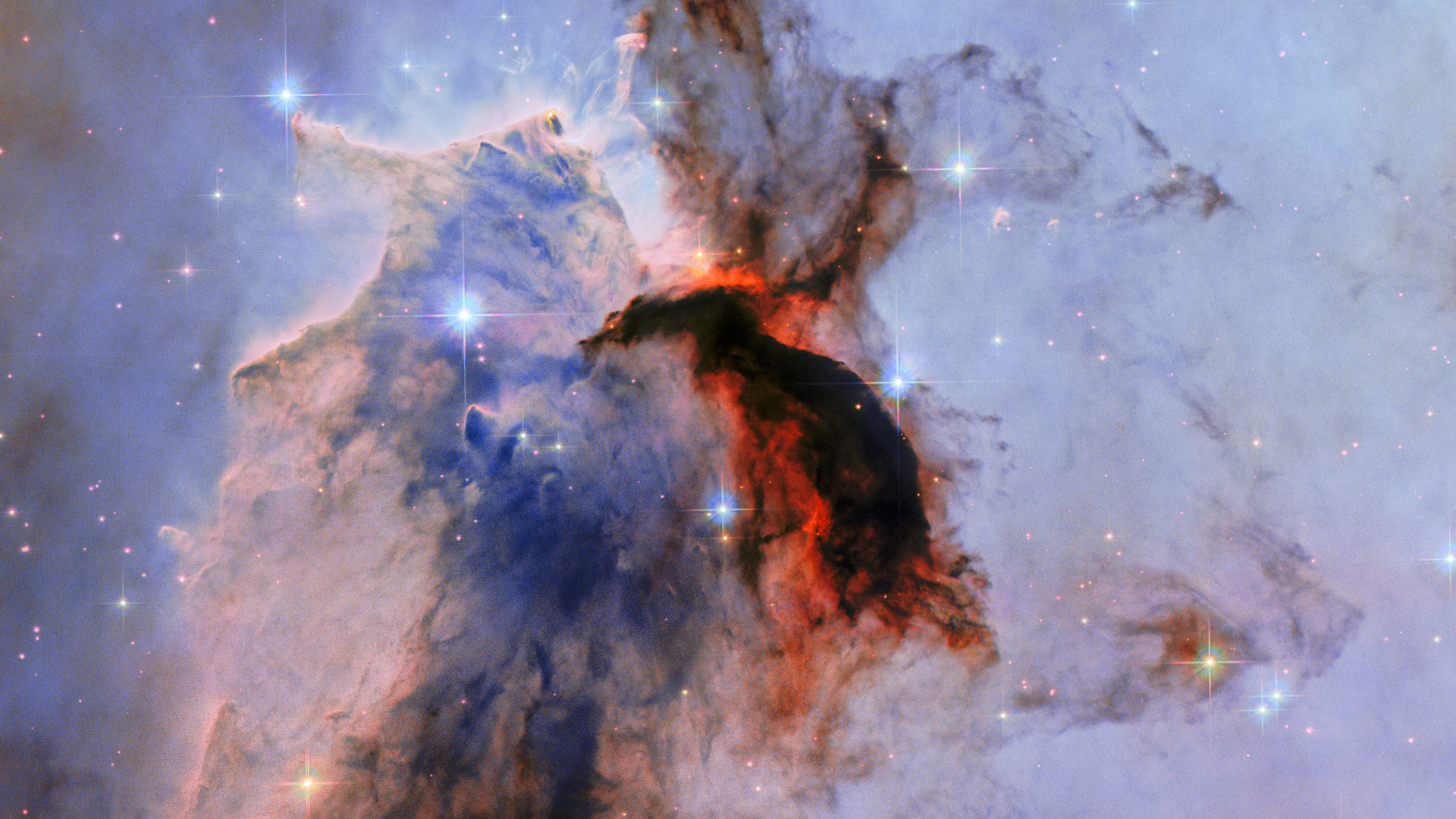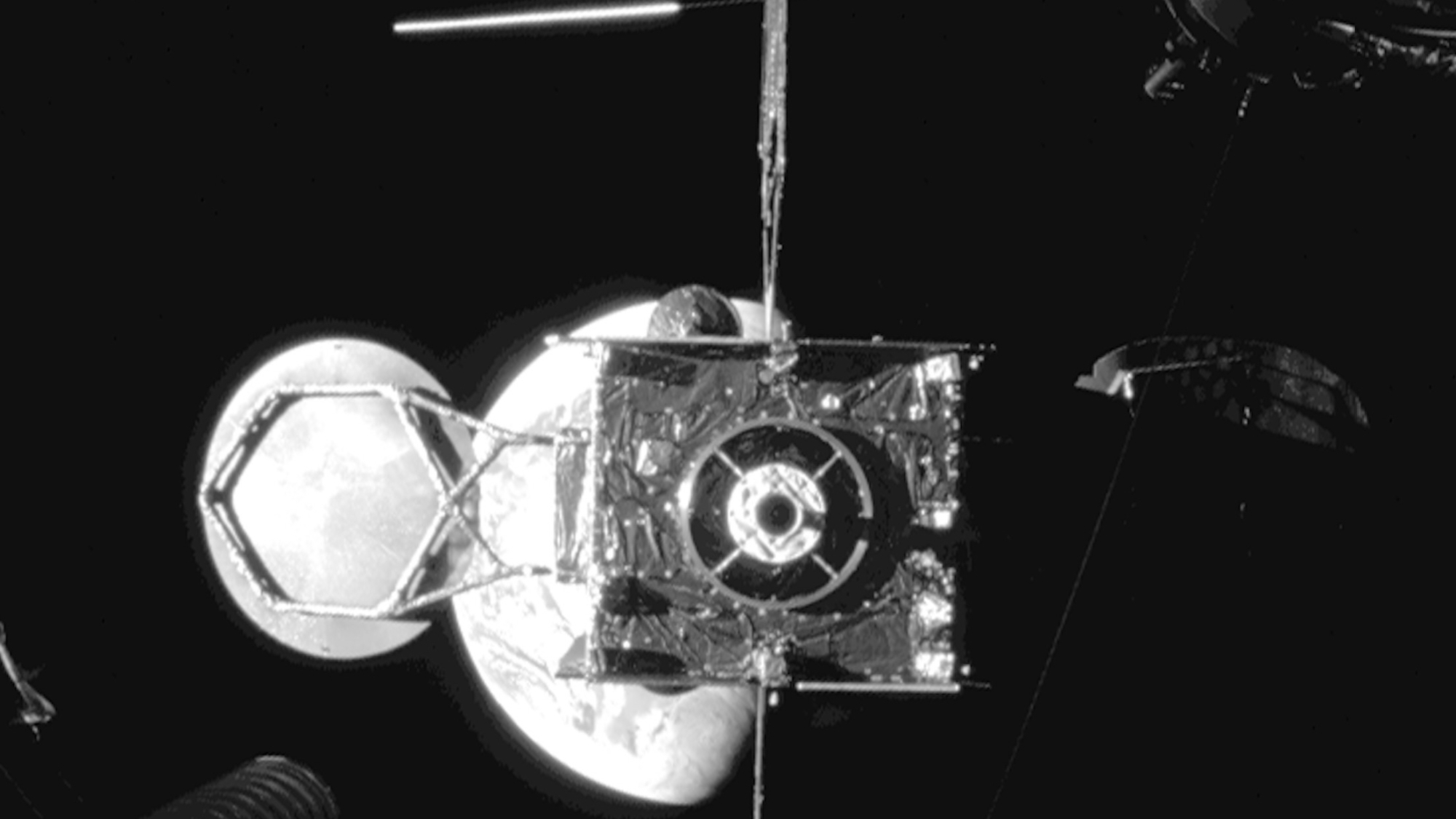Astronaut-Aquanauts: 50 People Have Now Orbited Earth and Lived Undersea

Reid Wiseman is back on the surface of the Earth.
A NASA astronaut since 2009, Wiseman logged 165 days on the International Space Station two years ago. His most recent landfall Friday (July 29) was not from orbit, however, but from under the ocean.
"Proud to be the 50th human who has orbited Earth and lived under the sea," Wiseman wrote on Twitter. [Gallery: Astronauts Explore Undersea 'Asteroid']
Update: According to NASA NEEMO Mission Director (and aquanaut) Marc Reagan, Megan McArthur Behnken is the 50th astronaut-aquanaut. When two astronauts who have flown in space become aquanauts in the same mission (as is the case for NEEMO 21), the ordering is based on who was commander. Wiseman served as the commander first, hence he is no. 49, and then Behnken, who is no. 50.
For eight days, Wiseman traded his title as an astronaut to become an aquanaut, serving as the commander of the NEEMO 21 mission on board the Aquarius Reef Base, the world's only undersea research station. Since 2001, NASA has been sending crews to Aquarius — located 62 feet (19 m) below the surface of the Atlantic Ocean in the Florida Keys National Marine Sanctuary — to conduct simulated space missions.
"This was the second greatest operational experience of my life. Amazing place, incredible people," said Wiseman.
The 21st NEEMO, or NASA Extreme Environment Mission Operations, expedition began July 21, as Wiseman and his international crewmates splashed down to the school-bus-sized base. The aquanauts also included NASA astronaut Megan Behnken, Matthias Maurer of the European Space Agency and Marc O'Griofa of the Veterans Administration.
Get the Space.com Newsletter
Breaking space news, the latest updates on rocket launches, skywatching events and more!
As Wiseman and O'Griofa surfaced, Dawn Kernagis of the Florida Institute for Human & Machine Cognition and Noel Du Toit of the Naval Postgraduate School joined Behnken and Maurer for the second half of the NEEMO 21 mission.
During their simulated spacewalks carried out underwater, Wiseman and his crew evaluated tools and techniques that could be used during future missions to the space station and to deep space, including Mars. Inside the habitat, their objectives included testing a medical telemetry device and a DNA sequencer similar to the one now on orbit and soon to be used by station flight engineer (and former Aquarius aquanaut) Kate Rubins.
Of the 50 astronaut-aquanauts to date, all but one lived on board Aquarius. The only astronaut to gain his aquanaut status somewhere else was also the first to do so.

Scott Carpenter, who on May 24, 1962 became the second American to orbit the Earth, followed up his time in space by serving for 30 days on board the U.S. Navy's Sealab II off the coast of California in 1965. One of NASA's original seven Mercury astronauts, Carpenter died in 2013.
The area where Wiseman, his NEEMO crewmates, and all Aquarius "spacewalkers" explore is called Carpenter Basin in honor of the pioneering astronaut-aquanaut.
Wiseman is the 28th astronaut-aquanaut to have first flown in space before living on the ocean floor. Six out of the 50 astronaut-aquanauts have resided aboard Aquarius twice.
There are also seven astronauts who have participated in NEEMO expeditions but are still waiting to make their first spaceflight, including Jessica Meir, who was a member of the NEEMO 4 crew in 2002, 11 years before NASA chose her to become an astronaut.
Wiseman launched to the space station in May 2014 on board Russia's Soyuz TMA-13M spacecraft and served as a flight engineer as part of the station's Expedition 40/41 crew. When he returned to Earth on Nov. 9, 2014, it took just three and a half hours for the Soyuz to descend from orbit to land on the steppe of Kazakhstan.
By comparison, it took more than 16 hours for Wiseman to ascend from the ocean floor as a result of the time needed to decompress safely.
"I will walk away from NEEMO 21 with a vast amount of gained knowledge and incredible experience," Wiseman said the night before he "splashed up," according to a blog authored by Kernagis. "It has been an honor to spend nine days underwater on Aquarius."
"The first steps in exploring Mars," he concluded, referring to his NEEMO experience. "It is time to put people on the red planet. Fly NASA."
See a list of the first 50 astronaut-aquanauts, from Scott Carpenter to Reid Wiseman, at collectSPACE.
Follow collectSPACE.com on Facebook and on Twitter at @collectSPACE. Copyright 2016 collectSPACE.com. All rights reserved.
Join our Space Forums to keep talking space on the latest missions, night sky and more! And if you have a news tip, correction or comment, let us know at: community@space.com.

Robert Pearlman is a space historian, journalist and the founder and editor of collectSPACE.com, a daily news publication and community devoted to space history with a particular focus on how and where space exploration intersects with pop culture. Pearlman is also a contributing writer for Space.com and co-author of "Space Stations: The Art, Science, and Reality of Working in Space” published by Smithsonian Books in 2018.In 2009, he was inducted into the U.S. Space Camp Hall of Fame in Huntsville, Alabama. In 2021, he was honored by the American Astronautical Society with the Ordway Award for Sustained Excellence in Spaceflight History. In 2023, the National Space Club Florida Committee recognized Pearlman with the Kolcum News and Communications Award for excellence in telling the space story along the Space Coast and throughout the world.










